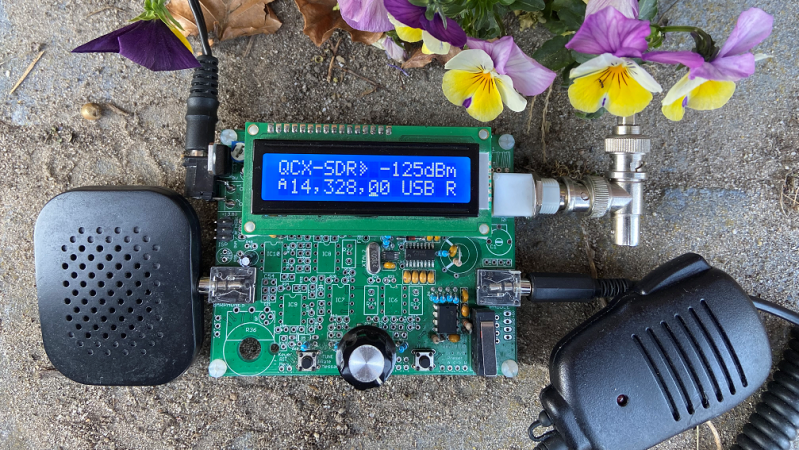
ATMega328 SSB SDR For Ham Radio
by Danie ConradieThe humble ATmega328 microcontroller, usually packaged as an Arduino Uno, is the gateway drug for millions of people into the world of electronics and embedded programming. Some people just can’t pass up the challenge of seeing how far they can push the old workhorse, and it looks like [Guido PE1NNZ] is one of those. He has managed to implement a software-defined SSB ham radio transceiver for the HF bands on the ATMega328, and it looks like the project is going places.
The radio started life as a QRP Labs QCX, a $49 single-band CW (morse code) HF transceiver kit that is already one of the cheapest ways to get on the HF bands. [Guido] reduced the part count of the radio by about 50%, implementing much of the signal processing digitally on the ATmega328. On the transmitter side, the SSB signal is generated by making slight frequency changes to a Si5351 clock generator using 800kbit/s I2C, and controlling a very efficient class-E RF power amplifier with PWM for about 5W of output power. The increased efficiency means that there is no need for the bulky heat sink usually seen on SSB radios. The radio is continuously tunable from 80m to 10m (3.5 Mhz – 30 Mhz), but it does require plugging in a different low pass filters for each band.
The modified QCX is named QCX-SSB, but the project is rapidly evolving with [Guido] and a few other working to turn it into a completely new radio, called the µSDX. Go drop in at the discussion group to stay up to date. If you want to build your own, the easiest way at the moment is to get a QCX kit, and build it using the instruction on the QCX-SSB Github repo. Take a look at the overview below by [Manuel DL2MAN]. However, the project is rapidly evolving, and it seems very likely that it will soon outgrow its QCX base and the ATmega328 powering it.
This project could greatly reduce the technical and financial barrier of entry for new hams into the HF bands, and we will definitely be keeping a very close eye on it. If you want to get started with just a receiver, check out this multi-band SSB capable receiver based on the Silicon Labs Si4735.